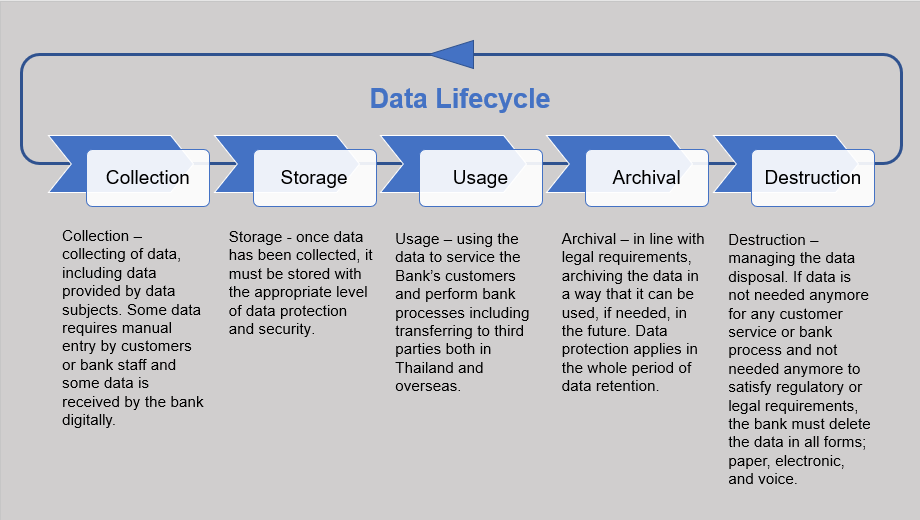Comprehending the Duty of Data Destruction in Fortifying Cyber Security Defenses
Wiki Article
Exploring the Relevance of Data Destruction in the Context of Computer Security Solutions and Protecting Confidential Information
In an age where information violations are progressively usual, the relevance of reliable information destruction can not be overstated. Organizations has to take on rigid actions to ensure that delicate info is not just shielded throughout its lifecycle however additionally decisively gotten rid of when no more required. The approaches utilized for data elimination, coupled with compliance to legal criteria, play a pivotal duty in keeping privacy and depend on. Nonetheless, the implications of these methods expand past mere compliance, affecting a business's online reputation and functional stability in the electronic market. What approaches can organizations implement to boost their data damage protocols?Recognizing Data Damage
Data devastation is a crucial element of computer safety that entails the long-term elimination of data from storage space gadgets to avoid unauthorized accessibility and potential data breaches. In an increasingly electronic landscape, companies deal with increased risks connected with sensitive details being improperly accessed or exploited. Efficient information damage safeguards versus these threats, making sure that private dataâEUR" such as client info, intellectual home, and economic recordsâEUR" can not be recouped after disposal.Recognizing the significance of data destruction extends past plain conformity with lawful and regulatory structures; it is vital for preserving organizational honesty and count on. When data is improperly managed or improperly ruined, the effects can be severe, including economic loss, reputational damages, and legal responsibilities.

Techniques of Data Elimination

One common technique is information cleaning, which entails overwriting existing information with arbitrary patterns numerous times. This strategy renders the original data irretrievable, making it a popular choice for organizations seeking to protect secret information.
One more technique is degaussing, which utilizes a powerful electromagnetic field to disrupt the magnetic domain names on storage space devices, effectively erasing the data. This strategy is specifically reliable for magnetic media but is not appropriate to solid-state drives.
Physical destruction is another durable technique, including the shredding or crushing of storage space tools. This technique guarantees that data recuperation is essentially difficult, making it suitable for extremely sensitive details.
Finally, file encryption can serve as a corresponding technique to data removal. By securing data prior to removal, organizations can include an extra layer of safety and security, making sure that also if residues are recouped, they remain hard to reach without the decryption key. Each approach needs to be picked based on the degree of data level of sensitivity and the specific safety demands of the company.
Legal Compliance and Information Safety And Security
Organizations should browse a complicated landscape of lawful requirements connected to data protection, particularly after executing approaches of data obliteration. Various laws, such as the General Data Protection Policy (GDPR) and the Health Insurance Policy Portability and Responsibility Act (HIPAA), enforce strict guidelines on just how companies have to manage and get rid of of delicate information. Failure to adhere to these laws can result in considerable lawful effects, including significant penalties and reputational damage.Data damage procedures have to be carefully recorded to show compliance with appropriate legislations and criteria. This documentation not only works as evidence of adherence to legal obligations but likewise illustrates a dedication to guarding sensitive information. Organizations needs to likewise establish clear plans regarding data retention and destruction timelines, ensuring that data is not held longer than necessary.
visit site

In addition, normal audits and evaluations of data destruction techniques are important to keep conformity and adjust to progressing legal frameworks (data destruction). By proactively resolving lawful demands, organizations can mitigate dangers related to data violations and show their commitment to information safety. Ultimately, focusing on legal conformity in data destruction procedures is not just a regulative responsibility, but an essential aspect of a robust information safety and security strategy
Influence On Business Credibility
The track record of a company can be considerably influenced by its method to data devastation and administration. In today's electronic landscape, where data violations can occur anytime, the failing to correctly deal with delicate information can cause serious consequences. Organizations that improperly manage data devastation risk subjecting personal customer details, which not only goes against privacy legislations however additionally erodes depend on amongst stakeholders and clients.A ruined reputation can lead to reduced consumer loyalty, as clients come to be reluctant to involve with a business that has actually demonstrated neglect in safeguarding their information. In addition, negative promotion surrounding a data breach can have an enduring result, as possible consumers might be discouraged by the viewed lack of protection. This can lead to a direct decline in income and market share.
Additionally, organizations that focus on information damage as part of their safety and security technique can improve their online reputation by showcasing their dedication to securing sensitive info. By adopting rigid information administration practices, organizations can not just minimize dangers however likewise place themselves as credible entities in their respective industries, therefore reinforcing their general brand picture.

Finest Practices for Secure Disposal
Executing best techniques for protected disposal of information is important for reducing threats connected with information breaches and making certain compliance with personal privacy laws. Organizations ought to adopt a thorough data disposal plan that describes treatments for both physical and digital information destruction.For physical data storage space devices, such as disk drives, shredding or degaussing is recommended to stop data recovery. In addition, organizations must maintain a chain of custody paperwork throughout the disposal process, making sure responsibility and traceability of disposed things.
For digital information, making use of software that abides by sector standards for data wiping is important. This software program should overwrite existing data numerous times, making recuperation practically impossible. It is likewise essential to validate the effectiveness of the data damage process via audits or third-party analyses.
Educating employees on safe disposal practices adds another layer of safety, as human mistake can often result in data exposure. Frequently assessing and upgrading disposal policies guarantees positioning with progressing laws and technological improvements. By applying these best practices, companies can dramatically minimize the risk of unauthorized information gain access to and boost their overall information security strategy.
Conclusion
In final thought, information devastation is a basic have a peek at this site aspect of computer security solutions that ensures the defense of secret information from unauthorized access. Executing effective methods of information elimination, go adhering to legal conformity, and acknowledging the effect on organization reputation are important parts of a thorough data safety and security strategy. By taking on finest methods for protected disposal, companies can promote trust with customers and protect delicate data, ultimately contributing to a more safe and secure digital landscape.In a period where data violations are progressively common, the value of efficient data damage can not be overstated.Data devastation is an essential element of computer safety and security that includes the irreversible elimination of information from storage tools to avoid unapproved access and prospective information breaches. Organizations must also establish clear policies pertaining to data retention and damage timelines, making certain that information is not held longer than required.
By proactively attending to lawful demands, organizations can minimize risks connected with information violations and demonstrate their dedication to data security (data destruction). Eventually, prioritizing legal compliance in data damage processes is not simply a regulatory responsibility, but a fundamental element of a robust information safety and security approach
Report this wiki page